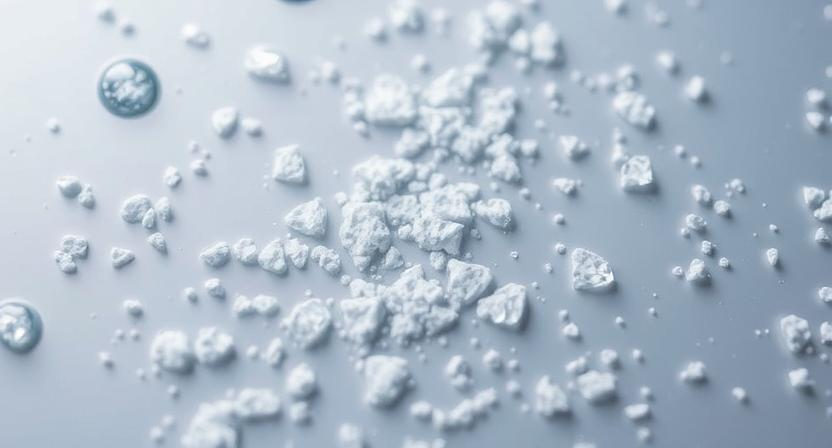
Introduction
In the realm of coatings and paints, enhancing water resistance is a critical objective for prolonging the lifespan of surfaces and preserving aesthetic qualities. One material that has garnered significant attention for this purpose is Hydrophobic Silica. This compound has unique properties that make it an invaluable additive in the formulations of protective coatings. Understanding how hydrophobic silica functions within coatings can lead to more durable and efficient products.
The Chemistry of Hydrophobic Silica
Hydrophobic silica is a modified form of silicon dioxide (SiO2) where the surface of the silica particles is treated to repel water. This modification involves attaching hydrophobic groups to the silica surface, often through a process known as silylation. The result is a material that not only resists water but also enhances the interfacial properties of coatings.
The hydrophobic groups attached to the silica surface reduce the surface energy, making it less likely for water molecules to adhere. This characteristic is crucial in preventing water penetration in coatings, which can lead to degradation of the underlying substrate.
Mechanism of Water Resistance Enhancement
The incorporation of hydrophobic silica into coatings improves water resistance through several mechanisms:
Surface Roughness Modification
Hydrophobic silica particles increase the surface roughness at the microscopic level. This roughness amplifies the hydrophobic effect by creating air pockets that minimize the contact area between water droplets and the coating surface, a phenomenon often described by the Cassie-Baxter model. The reduced contact angle hysteresis leads to enhanced water repellency.
Barrier Formation
The dispersion of hydrophobic silica throughout the coating matrix acts as a barrier to water diffusion. The silica particles obstruct the pathways that water molecules would typically follow to penetrate the coating. This tortuous path increases the overall resistance to water ingress.
Improved Cohesion
Hydrophobic silica enhances the mechanical properties of coatings by improving cohesion within the matrix. The particles act as reinforcement agents, which can reduce the occurrence of micro-cracks that serve as entry points for water. A more cohesive coating is less susceptible to environmental stressors.
Application in Various Coatings
Hydrophobic silica finds application across different types of coatings, each benefiting uniquely from its properties.
Protective Coatings
In protective coatings for metals and concrete, hydrophobic silica contributes to corrosion resistance by preventing water and dissolved ions from reaching the substrate. Studies have shown that coatings containing hydrophobic silica exhibit significantly lower water uptake and enhanced durability in harsh environments.
Automotive Paints
Automotive paints benefit from hydrophobic silica through improved gloss retention and ease of cleaning. The hydrophobic surface reduces water spotting and enhances the self-cleaning properties of the paint, leading to prolonged aesthetic appeal.
Architectural Coatings
In architectural applications, coatings with hydrophobic silica help in preventing moisture-related issues such as efflorescence and mold growth. The enhanced water repellency ensures that building surfaces remain dry, reducing maintenance costs and extending the life of the structures.
Advantages Over Traditional Additives
Compared to traditional water-resistant additives, hydrophobic silica offers several advantages:
Enhanced Durability
Hydrophobic silica improves the longevity of coatings by providing sustained water repellency even under continuous exposure. Its chemical stability ensures that the hydrophobic properties do not diminish over time.
Environmental Compatibility
As a silica-based material, hydrophobic silica is generally considered environmentally friendly. It does not release harmful substances into the environment, making it suitable for coatings in sensitive applications.
Versatility
Hydrophobic silica can be incorporated into various coating systems, including solvent-based and water-based formulations. Its compatibility with different binders and pigments makes it a flexible choice for manufacturers looking to enhance water resistance without overhauling existing formulations.
Optimization of Coating Formulations
To maximize the benefits of hydrophobic silica, careful consideration must be given to the coating formulation process.
Particle Size Distribution
The particle size of hydrophobic silica influences the surface roughness and, consequently, the hydrophobicity of the coating. Utilizing a controlled particle size distribution can optimize the balance between surface texture and coating clarity, especially in clear coatings.
Dispersion Techniques
Proper dispersion of hydrophobic silica within the coating matrix is crucial. Advanced mixing techniques and the use of appropriate dispersing agents can prevent agglomeration, ensuring uniform distribution and consistent performance throughout the coating.
Concentration Levels
Determining the optimal concentration of hydrophobic silica is essential. While higher concentrations may enhance water resistance, they can also affect other properties such as viscosity and adhesion. Empirical testing is often necessary to tailor the concentration to specific application requirements.
Case Studies and Research Findings
Several studies have highlighted the effectiveness of hydrophobic silica in improving water resistance:
Marine Coatings
In marine environments, coatings are subjected to constant water exposure and salt spray. Research has demonstrated that coatings containing hydrophobic silica exhibit superior resistance to blistering and delamination compared to those without it. The protective layer significantly reduces the rate of corrosion on metal surfaces.
High-Humidity Conditions
In regions with high humidity, coatings can fail prematurely due to moisture ingress. Studies have shown that hydrophobic silica enhances the moisture barrier properties of coatings, leading to improved performance in humid climates. Buildings protected with such coatings show fewer signs of dampness and structural damage over time.
Conclusion
Hydrophobic silica plays a crucial role in enhancing the water resistance of coatings and paints. Its unique properties contribute to the durability and effectiveness of protective layers across various applications. By integrating hydrophobic silica, manufacturers can develop coatings that offer superior protection against moisture, thereby extending the lifespan of the substrates they protect. As research advances, the potential of hydrophobic silica is expected to expand, offering even more sophisticated solutions in the field of protective coatings.
For more information on hydrophobic silica and its applications, visit Hydrophobic Silica to explore cutting-edge developments in this field.












